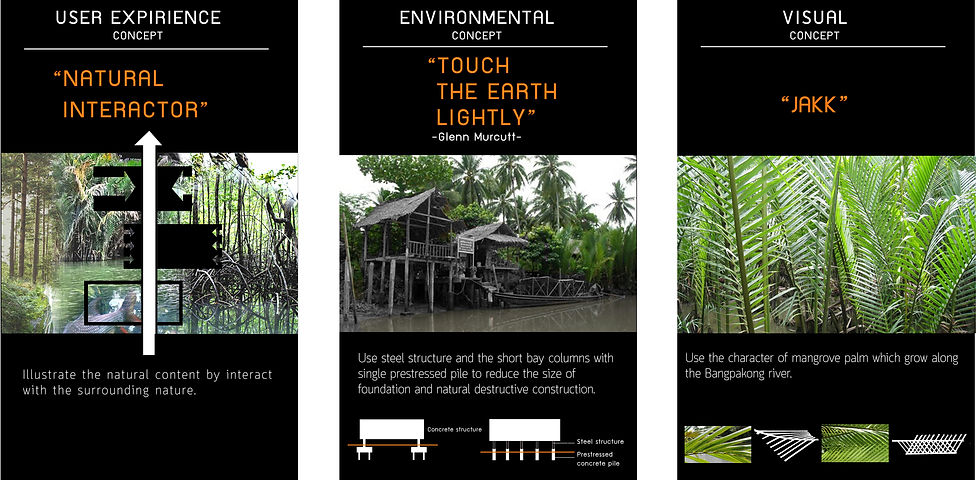
BANGPAKONG WETLAND MUSEUM
ARCHITECTURAL THESIS
Bangpakong Wetlands are areas with high biodiversity. In some seasons, water in the river is fresh water. In other seasons, when the sea level is high, water in this river will become brackish water. This change causes a variety of plant and animal species throughout the stream. Moreover, these wetlands are exploited by people in the community for livelihood which is different from most wetlands that are usually preserved.
However, the rise of industrial plants and docks in the past several years causes a serious environmental impact on Bird Island, Irrawaddy dolphins and other species, as well as the local fisherman. Therefore, people who live around Bangpakong River had gathered in the name of “Pakee Bangpakong”, in order to conserve the abundance of nature, achieve sustainable utilization and push Bangpakong Wetlands forward to get registered as a “Ramsar Sites” for facilitating of conservation.
Bangpakong Wetland Museum is intended to illustrate the biodiversity of the watershed, from upstream to downstream. It shows the relationship of nature and indicates both current and future threats and for preserving the sustainability of natural abundance. In addition, the museum also links nearby natural attractions together, which is a part of pushing Bangpakong Wetlands forward to get registered as a “Ramsar Sites”.




EXHIBITION DESIGN
The content of the Museum is about the wetlands which are very spacious. So, The content is divided into four main parts, the upstream, the midstream , the downstream and the estuary.

EXHIBITION ROUTE
4 main contents are arranged from top to bottom, to make the visitors feel like the water that flows from the top which is the forest down to the river and the sea.

STRUCTURAL DESIGN
Roof structure is designed to reduce the dept of the beam from taking long span. Short bay column which is 3 meters long can reduce the number of piles for one column to one pile that make the foundation like the pin that do not affect the nature like concrete structure and normal lenght bay column.












